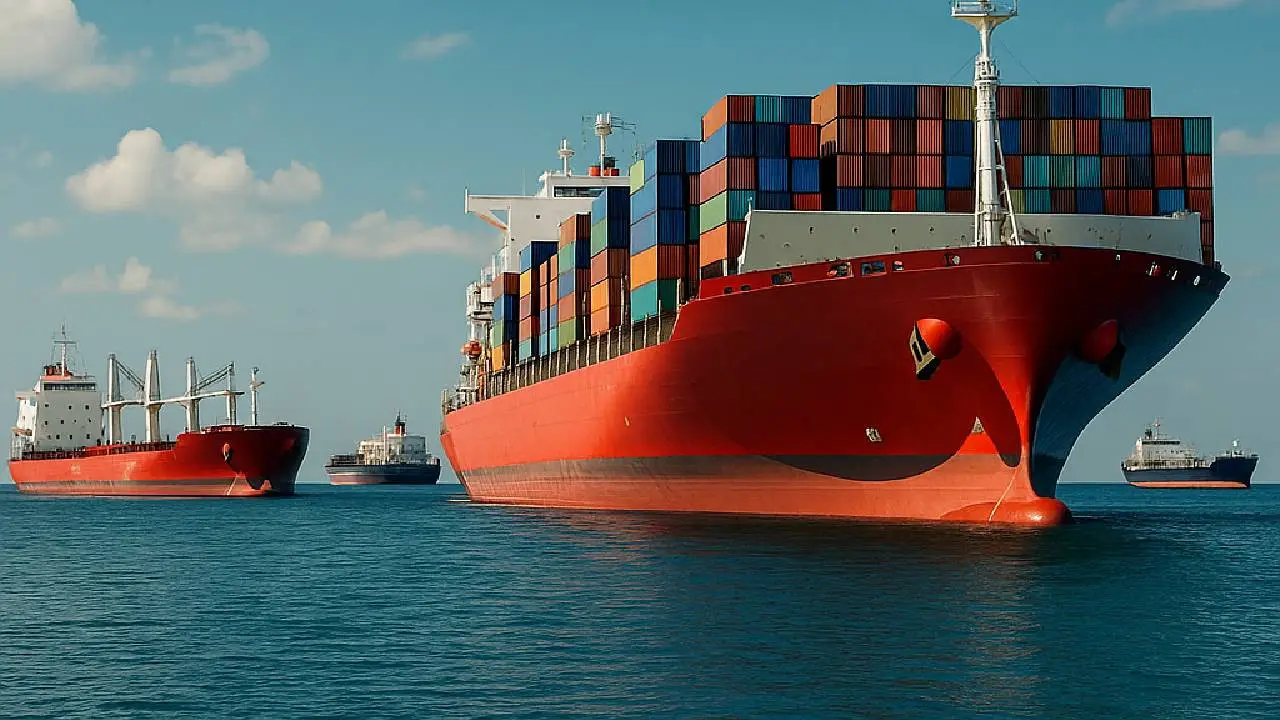
(Credit: OpenAI)
National News: Prime Minister Modi began his address by recalling the milestone of Vizhinjam International Seaport becoming fully operational. This port, located in Thiruvananthapuram, welcomed the world’s largest container vessel MSC-Irina earlier this year. For India, this was a defining moment, as it positioned the nation among global leaders in deepwater shipping hubs. The Prime Minister called it a proud achievement, but quickly noted that it was only the beginning of an even bigger maritime story that was about to unfold on the national stage.
Before thousands of naval cadets, maritime students, and industry stakeholders, Modi announced initiatives worth $26 billion. This massive investment was designed not only to expand shipping capacity but also to push India toward sustainability. From expanding fleets to building green technologies, the announcements reflected both ambition and responsibility. By laying out a long-term vision, Modi made it clear that maritime growth is central to India’s economic rise. Observers say it is the largest commitment the sector has ever seen.
A key highlight was the Shipping Corporation of India’s expansion plan, which aims to increase its fleet to 216 vessels by 2047. This includes bulk carriers, tankers, and offshore ships. Modi also launched the Bharat Container Shipping Line, with 51 new container vessels on a ₹60,000 crore investment. The announcements signaled India’s determination to build a self-reliant and globally competitive shipping line. Industry leaders hailed this move as one that will cut dependence on foreign shipping giants and empower Indian trade.
Sustainability took center stage with the launch of the Green Tug Programme. India will acquire 100 eco-friendly tugs at a cost of ₹12,000 crore, reducing emissions at ports. Oil and gas PSUs also placed orders for 59 vessels worth ₹47,800 crore, aligning growth with environmental responsibility. The Dredging Corporation of India added 11 dredgers worth ₹3,775 crore, boosting capacity to maintain waterways. These steps show a balance between expansion and ecology, making India’s maritime industry future-ready and greener.
The combined orders totaled 437 vessels, amounting to an investment of ₹2.2 lakh crore ($26 billion). Analysts call this a maritime revolution, unmatched in India’s history. The scale demonstrates India’s resolve to become a maritime powerhouse. It also shows a strategy to dominate regional trade routes, support exports, and reduce logistics costs. Experts say the new fleet will not only modernize India’s shipping but also create thousands of jobs, benefiting coastal communities and strengthening national security.
Union Minister Sarbananda Sonowal highlighted reforms in policies and laws that are reshaping the maritime sector. He said the conclave represented a meeting point of vision, innovation, and opportunity. Maharashtra Chief Minister Devendra Fadnavis added that ₹56,000 crore worth of MoUs were signed at the event, proving that private and state investments are also flowing. Leaders across the spectrum hailed Modi’s vision as transformative, making India Maritime Week 2025 a global benchmark for port-led development and modern shipping solutions.
With India Maritime Week 2025, Modi placed the nation firmly on the world’s maritime map. The vision is not only about ships and ports but about economic dominance through waterways. Experts believe this $26 billion investment will reshape global perceptions of India’s trade capabilities. The message was clear—India is no longer content being a passenger in global trade; it is ready to captain its own course. The conclave ended with optimism, signaling a new era of maritime strength.





Copyright © 2025 Top Indian News
